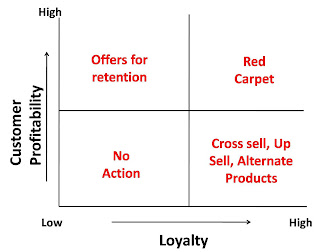– Identify the most and least profitable products, services, customers, or sales Channels
– Accurately determine true costs for products and services
Date of The Workshop - Friday, 22nd January, 2010
Time - From 9:00 a.m. to 5.30 p.m.
Venue of the Workshop:
B.V. Rao Hall , 1st Floor
Deccan Gymkhana Recreation Building
Deccan Gymkhana Club
Opp Hotel Ait / Near Chitale Sweet Mart
Pune - 411 030
Faculty:
Mr. Rajendra Patil is B.E. - Polymer Engineering from Pune Univ. & a Cost Accountant (AICWA). He is a technocrat with 17 years of proven experience in Business Analysis, Providing Consultancy in Strategic Cost Management, Profitability Analytics, Organisational Performance Management and Business Process Management. He was working with SAS Institute R&D India Pvt. Ltd., Pune, a US based Enterprise, as a Specialist – Performance Management Solutions for Indian Customers. In 2008 he ventured into consulting and started APPS Consulting.The major objective of APPS is to provide consulting services to organizations in Banking, Insurance,Retail, Communication, Manufacturing, IT and KPO sector. The unique proposition of APPS is to prove and earn. Mr. Patil has undergone Training on Activity Based Costing & Profitability Management as well as on Expert Modeling and OLAP analysis at SAS, U.S.A. He has handled various projects related to (ABC/M) various Business Organisations from Manufacturing, Telecom, Retail and Banking Sector. His clients are Kirloskar Group, Suzlon Energy,Thermax,JK Files and Tools,Merck India,Syngenta India,Waterville TG, ING Vysya Life Insurance, SAS R&D India, Systems America Inc.,Mercedes Benz India,Finolex Cables.
Who Should Attend the Workshop:
• CEOs, Senior as well as Middle Level professionals from Finance, Marketing, Costing, Operations, Sourcing who are keen to take their functional expertise to the next level.
• Note: This is not just a workshop but this can lead to Consultancy on ABM Projects. Systimatic Implementation of ABM will add to your bottom line in Lacs!!
• Workshop Charges / Fees - (Includes Course Material, Break-fast, Tea-Coffee & Lunch & Certificate)
Rs 4500/- per participant for 2 participants from the same organization.
Rs.4200 /- per participant for 3 or more participants from the same organization.
Payment to be made by cheque in the name of "Human Capital Consultants".
With Best Regards,
Ajay Walimbe
Director
Human Capital Consultants
A/16, Pradnyangad Apartment
Opp. Haripriya Hall
Navsha Maruti Mandir Lane
Off Tanaji Malusare Marg
Pune - 411 030
Tel: 020-66203576
Mobile: +91-9881060190
We Turn People into Asset!
ajaywalimbe@vsnl.net





